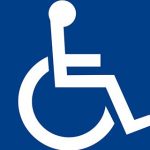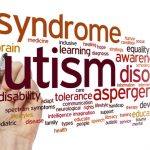Left Unprotected: An Interview With People With Disability Australia’s Giancarlo de Vera
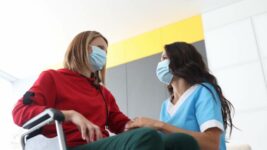
The understanding that elderly people and people living with disability were the two key demographics most at risk of contracting COVID-19, and further, that they have an increased susceptibility to greater harms on infection, has been well grasped since the onset of the pandemic.
Within phase 1A of its COVID vaccination roll out program, the Australian government prioritised those living in aged and disability care facilities as members of the public who were to be inoculated before all others, along with staff working in these environments.
Following the vaccination rate in NSW having reached 70 percent of all adults living in the state, the fifteen week Greater Sydney lockdown was lifted on 11 October.
And as “things get back to normal”, one might have expected that most people living with disabilities had been fully vaccinated.
However, according to People With Disability Australia (PWDA), this is far from the case. Indeed, disability advocates are warning that due to the low vaccine rates amongst these individuals, they may now be facing the worst stage of the pandemic.
Deprioritised
As the opening up of states and territories commences, vaccination rates amongst people with disability don’t reflect the overall levels in the wider community.
And whilst the Victorian government has acknowledged this and allocated $5 million to enhance the vaccine rollout amongst people living with disabilities, there has been no acknowledgment of this in NSW, and therefore, no heightening of the focus on vaccinating them.
According to PWDA, the National COVID Vaccine Taskforce recently announced that just over a third of National Disability Insurance Scheme (NDIS) participants have been fully vaccinated, while a little over two-thirds of NDIS participants living in shared accommodation have been double-jabbed.
Yet, these figures don’t give a clear picture of the vaccination rate amongst the wider community of people living with disability as the overwhelming majority aren’t NDIS participants and live in various settings throughout the community with their vaccine status remaining largely unknown.
And the Disability Royal Commission recently released its draft report, in which it gave a scathing appraisal of the vaccination roll out amongst Australians living with disability, and it advised that opening up plans should be postponed until all of these individuals are fully vaxxed.
A way forward
PWDA and 60-odd other disability advocacy groups presented the National Cabinet with an 11 point plan to better protect people with disability from COVID-19 in August.
The initiative includes prioritising in-home vaccinations, maximising choice and increasing data transparency.
A key part of the disability sector plan is that the Australian government releases clear public plans and transparent timelines around various aspects of the rollout.
The organisations underscore that much of the data around people with disability continues to be withheld.
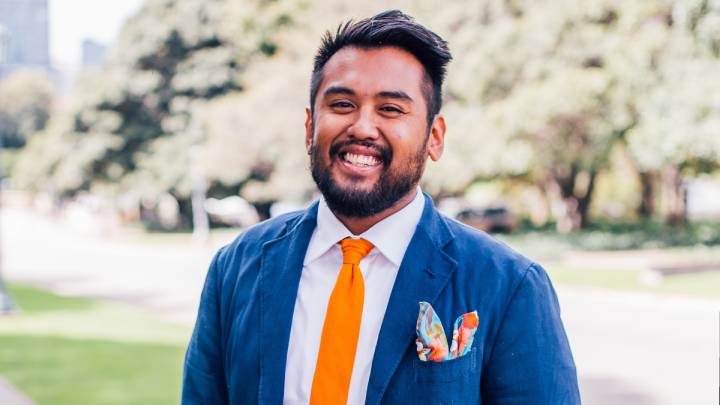
Sydney Criminal Lawyers spoke to PWDA senior policy manager Giancarlo de Vera about how it came to be that one of the key vaccine priority groups have been left out in the cold, and what opening up under these circumstances means for those living with disabilities.
Since the beginning of the pandemic, the entire community has been warned that those most vulnerable to COVID-19 are the elderly and people living with disabilities. Yet only one of these groups was legitimately prioritised in the rollout.
Giancarlo, how can this be the case when it was well understood that people with disability are at an enhanced risk?
There was an act of deprioritisation at the beginning of the rollout. Stage 1A involved aged care and people with disability living in facilities. In May, when it was rolled out, there was no consultation and an absence of planning for people with disability.
So, we suspect there was a sense that things were too hard in terms of pinning down the settings that included people with disability, compared to those in aged care.
Trying to get an understanding of where people with disability were wasn’t as easy as with aged care.
In retrospect, what we know is we didn’t get any targeted plans or actions that led to people with disability being vaccinated at the same rates as others in phase 1A and 1B.
This seemed to be due to the information around people with disability not being complete. The Commonwealth doesn’t have all that information. Some of the states and territories hold the data on where people with disabilities are.
So, it was quite difficult to try and find where these people were in order to have targeted actions.
Those factors lead to the deprioritisation of people with disability. Although we could have helped to identify these people in terms of a plan that would have involved consultation and co-design with us. But we never received the opportunity.
It was only when we saw the Sydney lockdown happen that we saw the conversation shift.
In terms of vaccination rates amongst people with disability, the data is difficult to ascertain.
The public data has been gathered from the NDIS only. And the vaccination rates are much better for those on the NDIS, because the government knows who they are, where they are, and they worked with their supports to get them vaccinated.
The unfortunate reality is that only one in ten people with disability are on the NDIS. So, there is no real understanding of how big this issue is.
We’ve been calling for transparency around this data from the beginning. And the government can release the data it has. But it has decided not to, despite numerous calls to have that happen.
So, what do the current opening up arrangements mean for people with disability in the Greater Sydney region?
It means two things. The first is that because we don’t have the confidence that we’re properly protected we have to self-impose lockdown.
Many will still have a lot of anxiety and fear around what it means to have things open up.
People will have to make a risk assessment for themselves, and quite often it will lead to the conclusion that they have to stay locked in.
So, that’s an unfortunate outcome with the rates of vaccination not being where they should be.
The second thing is it’s understood that the plan to open up doesn’t really include the community of people with disability. And that has been quite upsetting for that community.
Without really knowing the number of people with disability that are actually vaccinated, it’s going to be very difficult for us to be confident to live life as we normally would.
That has led to the self-imposition of the lockdown, as well as the need for us to keep pushing to find out what’s going to happen next.
The Victorian government recognised the low vaccination rates amongst people with disability in its state, and as a response, it allocated $5 million to speed up the rollout to these individuals.
How has the NSW government’s response to vaccinating people with disability been?
We welcome the Victorian initiative. But up to now, there is no similar initiative in NSW.
NSW has taken a decentralised approach, where they’ve left whole districts to local vaccine coordination. And that has been hit and miss.
Some local health districts have great liaisons with those in their districts, while others don’t.
But what we do know from those in the community is that those programs are already stretched, and we would like to see the NSW government do more of a targeted rollout.
The Disability Royal Commission released an interim report a fortnight ago. How did it reflect this situation?
It validated what we already knew. The Royal Commission clearly stated that the rollout was seriously deficient. So, in a way, it gave greater ability to us to continue saying what we have been saying.
The Royal Commission’s main recommendation was not to open up until people with disabilities were fully vaccinated. Obviously, we’re not seeing that. Sydney has opened up and Victoria is about to as well.
So, they’re not heeding the main recommendations of the Royal Commission report. And what we are concerned about is potentially the worst of the pandemic is yet to come for people with disabilities.
What that means is that as the Australian government starts to shift to less of a focus on the numbers of cases, and more of a focus on ICUs and hospitalisations, we’re worried that people with disability will be overrepresented in those statistics.
This is because they haven’t had a chance to be vaccinated, and because their ability to be triaged to the end point of them having COVID, could lead to these people being overrepresented in hospitalisation statistics, as well as those of COVID deaths.
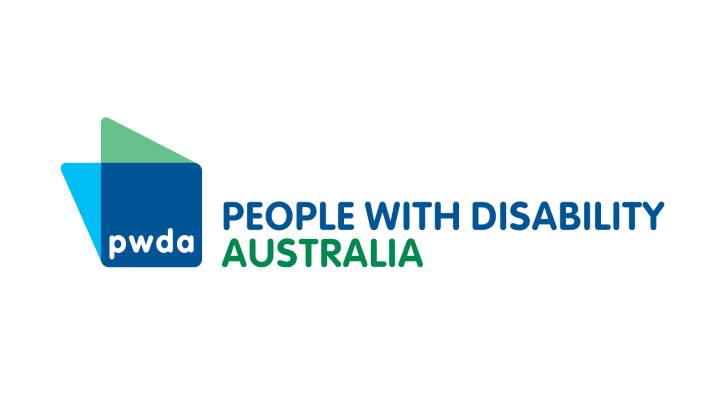
People With Disability Australia and a number of other advocacy groups presented the National Cabinet with an 11 point plan to improve the situation. What did it consist of? And how was it received?
The thrust of it was we needed a plan, we needed targets and we needed the data to back these up. As I said earlier, the data is still not available, and we are calling for it to be released.
We have seen some states commit to a plan, such as in Victoria, but the unfortunate reality is that overall, the 11 point plan has fallen on deaf ears.
We continue to be involved at a high level with the Advisory Committee for the COVID-19 Response for People with Disability, which is where we are focused on issue-by-issue, but there hasn’t really been a coordinated approach because of a lack of leadership at the National Cabinet level.
What has happened is the state and territories have decided to do their own thing. And the institution that was so effective at the beginning of the pandemic – the National Cabinet – has deteriorated, which has led to it not leading a coordinated response throughout jurisdictions.
So, this has led to the 11 point plan not being taken up because states and territories have had to focus on their own plans as opposed to a national one.
And lastly, Giancarlo, as opening up has already occurred in Greater Sydney, how does PWDA plan to proceed from here?
We’re still going to continue to push for the crux of the plan, which is more targeted programs. But we need to start thinking about local sites.
So, we want to start working on what the booster plan will look like. We will be doing some targeted work around carers that aren’t paid.
We need to improve the situation for those who are immune compromised. The absence of a targeted program for them is very much a concern for those who are compromised.
So, on our wish list is a commitment to severely immunocompromised people, who consist of around 500,000 individuals.
There is a need to get a better understanding of how these people are being vaccinated. These people are not just those with disability, but they include a number of other groups, such as cancer patients.




